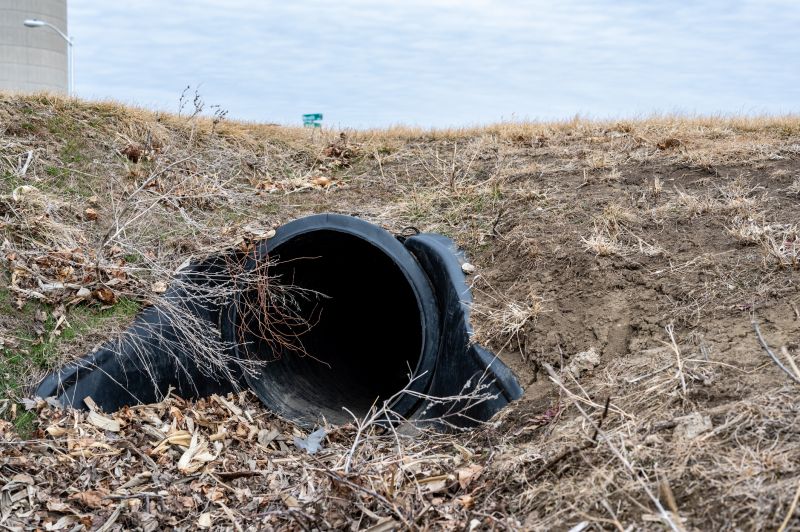Popular Leach Drain Installation Products For Efficient Drainage Systems
Discover the most sought-after products designed to make leach drain installation easier and more effective for your project.
 Installing a leach drain system requires careful selection of components to ensure proper functioning and longevity. The process typically involves a combination of gravel, perforated pipes, and filter fabrics designed to facilitate effective wastewater dispersal into the surrounding soil. Proper planning and material choice are essential to prevent clogging and ensure the system operates as intended. When selecting products for leach drain installations, considerations such as soil type, system size, and local regulations can influence the best choices for your specific project.
Installing a leach drain system requires careful selection of components to ensure proper functioning and longevity. The process typically involves a combination of gravel, perforated pipes, and filter fabrics designed to facilitate effective wastewater dispersal into the surrounding soil. Proper planning and material choice are essential to prevent clogging and ensure the system operates as intended. When selecting products for leach drain installations, considerations such as soil type, system size, and local regulations can influence the best choices for your specific project.
Top Overall Option
Perforated Drainage Pipe with Filter Wrap
This versatile perforated drainage pipe with integrated filter wrap offers a reliable solution for leach drain systems. Its perforations allow for even distribution of liquids, while the filter wrap helps prevent sediment intrusion, reducing clogging risks. Designed for durability, it is suitable for various soil conditions and system sizes, making it a practical choice for many installation scenarios.
Types of Products For Leach Drain Installations
Perforated Drainage Pipe with Filter Wrap
Flexible pipes with perforations and integrated filters designed for efficient leach field distribution.
Corrugated Drain Pipe
Rigid or flexible corrugated pipes suitable for various drainage applications, offering durability and ease of installation.
Filter Fabric for Drainage
High-quality geotextile fabrics that prevent sediment intrusion while allowing water flow.
Gravel or Crushed Stone
Clean, rounded gravel or crushed stone used to surround pipes and facilitate drainage.
Inspection Ports
Access points for system inspection and maintenance, ensuring proper operation over time.
Connectors and Fittings
Various connectors to join pipes securely and create a seamless drainage network.
Bedding Material
Fine gravel or sand used to provide a stable foundation for pipes.
Drainage System Sleeves
Protective sleeves that prevent damage during installation and extend pipe lifespan.
Geotextile Liners
Additional barriers to enhance filtration and prevent soil intrusion.
Trenching Tools
Specialized shovels and trenchers designed for precise excavation of drainage trenches.
Flow Meters
Devices to monitor the flow rate within the drainage system for performance assessment.
Drainage Pumps
Pumps used in systems requiring active water removal or in low-permeability soils.
Backfill Material
Clean fill material that supports proper soil compaction around the system.
Drainage System Anchors
Anchors to secure pipes and components in place during installation.
Leak Detection Devices
Tools to identify leaks or blockages within the drainage network.
UV-Resistant Components
Materials designed to withstand prolonged exposure to sunlight, ensuring durability.
Popular Choices
Widely used for leach field installations, offering versatility and ease of setup.
Commonly selected for its robustness and adaptability in various soil conditions.
Popular for its ability to prevent sediment intrusion while maintaining water flow.
Preferred for surrounding pipes to promote effective drainage.
Frequently included for system maintenance and troubleshooting.
Ease of assembly makes these connectors a common choice for pipe networks.
Protect pipes during installation and improve system longevity.
Trending for system monitoring and ensuring proper flow rates.
Increasingly popular for outdoor installations exposed to sunlight.
Standard choice for supporting the drainage system and ensuring stability.
Commonly used to secure pipes in place during installation.
Gaining popularity for proactive system maintenance.
Leach drain systems are often used in areas where traditional septic systems are not feasible or where soil conditions require specialized drainage solutions. The perforated pipes, wrapped in filter fabric, allow liquids to percolate evenly into the surrounding earth while preventing sediment intrusion. Gravel or crushed stone is typically used around the pipes to create a stable, porous environment that promotes drainage. Ensuring compatibility among these components and selecting high-quality materials can help maintain system integrity over time.
In addition to pipes and gravel, various accessories such as inspection ports, connectors, and geotextile fabrics can enhance installation ease and system durability. Proper installation techniques, including appropriate trench depth and bedding material, are critical to achieving optimal performance. Consulting product specifications and installation guidelines can aid in choosing the right components for your leach drain project, whether for residential, commercial, or agricultural applications.
Key Buying Considerations
- Soil type and permeability influence the choice of pipe and gravel size.
- System size and capacity should match the expected wastewater load.
- Compatibility of pipe materials with local soil and environmental conditions.
- Ease of installation and availability of accessories like connectors and inspection ports.
- Durability and resistance to UV exposure for outdoor systems.
- Filter fabric quality to prevent sediment intrusion and clogging.
- Proper trench depth to meet local regulations and optimize drainage.
- Ease of maintenance and access points for inspection and cleaning.
- Compatibility with existing septic or drainage systems, if applicable.
- Cost considerations balanced with material quality and system longevity.
- Local building codes and environmental regulations that may dictate system specifications.
- Availability of replacement parts and system components for future repairs.
- Ease of transportation and handling of materials to the installation site.
- Potential need for additional components like pumps or flow meters based on site conditions.
- Environmental factors such as groundwater level and surrounding vegetation.
